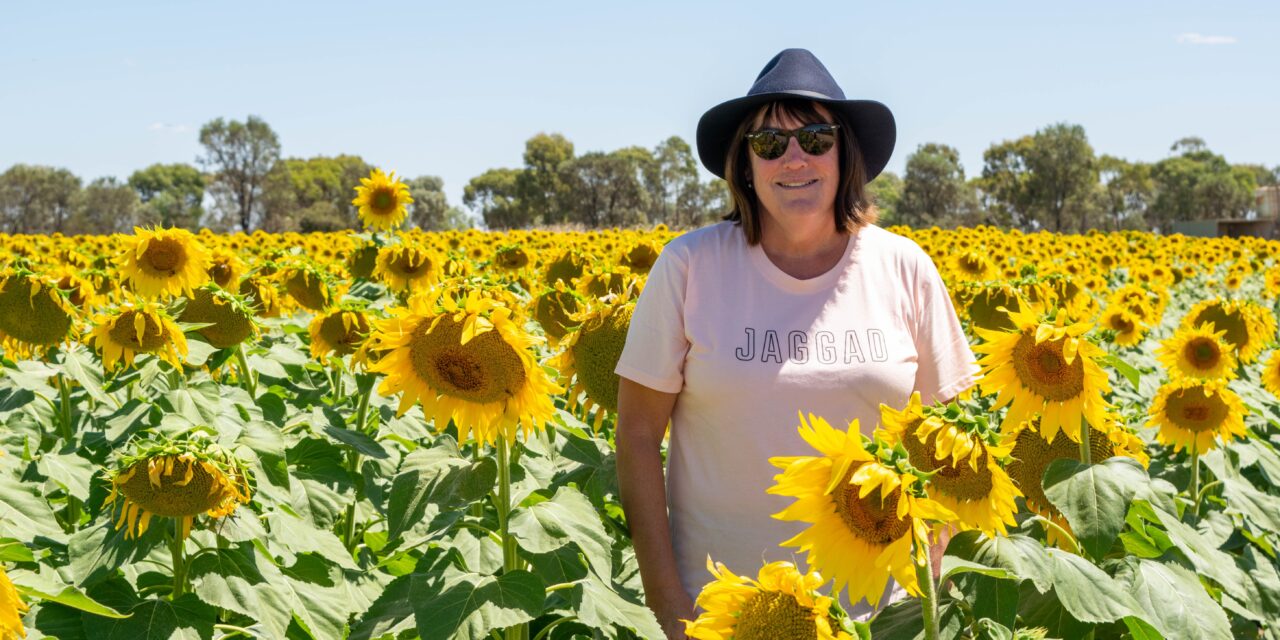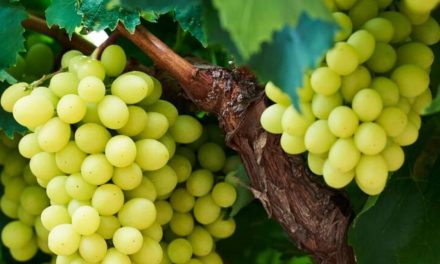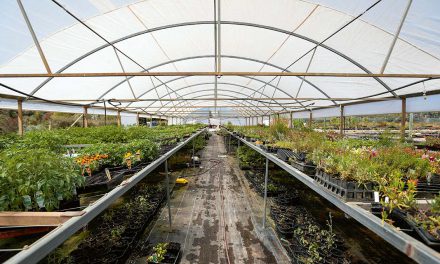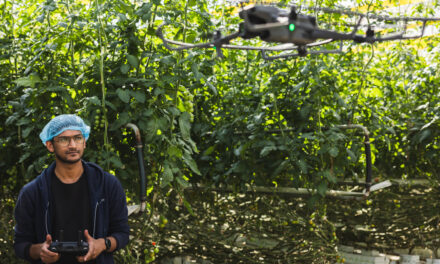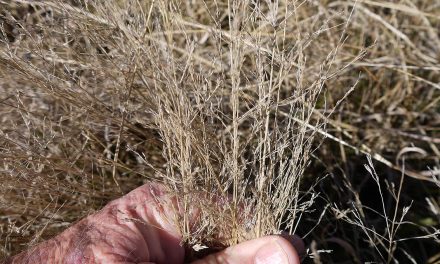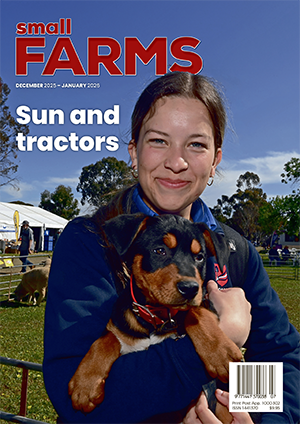Karen McInnes might be something of a closet scientist because she just loves experimenting. She runs Patho Park Petals, with husband Vin, and has become an experimental sunflower grower.
It’s a dangerous place to be caught in — small landholding, bored, too much spare space.
Karen McInnes, however, loves a challenge, almost as much as she loves her garden. And on the family’s 20-hectare property at Patho, west of Echuca in northern Victoria, she had a lot of garden.
But as it would soon turn out, nowhere near as much as she would eventually need.
“It’s true, I was simply bored into flowers, especially during COVID, when on another of those bored days I took part in an online growing course on sunflowers,” Karen said.
And that migh
t just have been the point at which Karen and her flourishing little florist business Patho Park Petals went from some spare space in the garden to gardening on an industrial scale — with almost 12 hectares of sunflowers.
It is, she insists, nothing permanent.
Yet.
“This is our first year with the sunflowers,” Karen said.
“It was really just a bit of an experiment: they’re good for the soil, so we thought we’d put in a crop and see how we go, then we had all these sunflowers.
“We have been a lucerne hay in small squares for the equestrian industry mainly but then we started getting a lot if inquiry from livestock farmers, so we had expanded that to round bales as well.
“And our crop rotation plan was to leave half the paddocks to rye-grass before bringing lucerne back the following year and that was another big appeal with the sunflowers — they really are good for your land.”
Sunflowers have a deep taproot, breaking up some of those soil layers and bringing more and different kinds of beneficial bacteria, fungi and microbes, making Karen’s — and anyone else growing sunflowers — the owners of a spectacular crop that is about to deliver some spectacular results.
And while there is a market for sunflower seeds and oil, the real profitability of these plants lies in their fungi-riddled roots, according to particle.scitech.org.au
Its experts say there are fungi in the roots of sunflower plants that take mineral phosphorous (which plants can’t absorb) and transform it into a phosphorous that plants can actually use to grow.
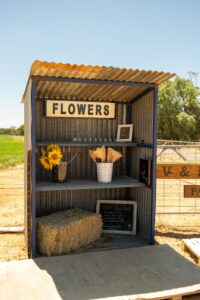
This means crops planted next to the sunflowers have ready access to this element that is essential to their health.
The flowers that have been sown in the paddock are Aus Gold 62s, and the first crop has proved a big learning curve.
“They’re just fascinating flowers, I just think they’re wonderful,” Karen said.
“They’re a dual-purpose type of sunflower, they can either be for oil or for seed for human and stock consumption.
“We’re just going to wait and see how it all pans out before we decide what to do with them.
“A lot of people have asked us if they actually follow the sun, and I’ve learned that sunflowers will always face the east.
“When they’re juvenile, they turn because during the day the east side of the stem will grow and be longer, then when the sun goes down the west side grows and they turn back, then once they’re mature, they always face east.”
Come harvest time sunflowers prove to require that little bit of extra effort — and that’s before you even bring out the header.
For a start, sunflowers are allelopathic — they exude toxins that stop nearby plants from growing. They might be helping you fix your soil but they help themselves by fixing any plant trying to share their little patch of dirt.
It certainly works for the sunflower, leaving a perfectly clear space for new seedlings to grow.
Except in crops such as Karen’s, where once they’ve reached a moisture level of nine per cent and oil content of 40 per cent the header does come out and except for the addition of a specialist comb, it’s just like harvesting any other paddock crop.
“You have to get your crop tested, and for us the closest place is Temora (that’s an 870km round trip) and then depending on whether we want seed or oil we have to send our crop to a processing plant as well,” Karen said.
“We were thinking we might go oil for this first harvest, with the header going in during April and off come their heads.”
Karen’s sunflowers went into the ground after the Melbourne Cup and as a summer flower they are normally good for nine weeks in the paddock — and they are great to look after, they get a fertiliser when they are sown and from there on it’s just water.
But Karen’s not just a one-flower farmer.
She also had a bit of spare space in her backyard, where the keen green thumb already had an almost botanic setting, which she had realised some years earlier she could commercialise — with everything from chrysanthemums to be ready to go in May for Mother’s Day to a rotation of dahlias, zinnia, cosmos and achillea.
Come winter it might be lisyanthus, ranunculi, poppies — there’s even been snapdragons.
She said she backed them up with whatever she had in her regular garden, which could mean roses, salvia and foliage.
“I just sell from the farm; it’s been unbelievably successful and just blew me away.
“I’m not ever going to be big enough to also supply florists in surrounding towns, I just can’t deliver the consistency they need — and all my flowers are grown in the open, not in commercial hothouses or anything like that.
“Sometimes we don’t have enough and sometimes way too many but that’s all okay — I’m happy with the way things are going.”
Karen is also a bit of an innovator. For $50 you get her clever DIY buckets, filled with a variety of flowers and foliage, which she says are in big demand with people setting up weddings, or 21sts or just parties.
“I might not be the biggest floral business in the region, but I am one who is determined to give back to the soil what we are taking out of it — I buy in good soil each year for the flowerbeds and add fertiliser, gypsum and water saving granules,” she said.
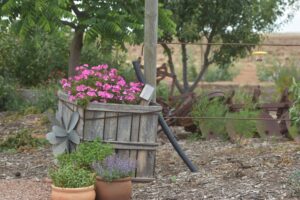
“At the end of May I pull everything out, get in more soil, start planting for the spring and so the seasons go on.”
Patho Park Petals might be a boutique flower farming business, with its charmingly rustic bunches of flowers, but once her sunflowers started blooming, so did more good ideas with Karen.
“I was just selling (the sunflowers) up at the roadside, and they had created so much talk that I thought we’d have an open day and see how it goes, so we decided on two weekends,” she said.
“We did a ticketed event because of COVID, and a bit of crowd control, but the number of families that came in just amazed us, we couldn’t believe that many would come.
“People brought out their babies and prams, some were dressed up, some were casual. We just opened the gates and let people do what they wanted to do, it was mostly up to them.”
The photo opportunities in the field of sunflowers were a big drawcard for locals, including the Echuca Photography Club, with one photo in particular grabbing attention from all around.
“We were sitting up near the gates where people were coming in, and we turned around, and all we could see was a baby being thrown in the air,” Karen recalled with a laugh.
“All you could see was the tops of the sunflowers — you couldn’t see the parents — you could just see this baby coming up out of the flowers and disappearing back into them.”
And there was a cost because this is a small farm enterprise.
Tickets for the open weekend were $10 (if you booked online) or $15 if you were a walk-in.
Once inside, you could take home as many sunflowers as you liked — at $4 a stem (with a BYO bucket and secateurs/shears/pruners COVID policy in place).
Patho Park Petals then hosted a ‘Sunset in the Sunflowers’ experience, where people could bring their own picnic baskets, drinks and folding chairs for the evening.
Sunset in the Sunflowers was $50 per family or $25 per person, and it was BYO everything.
“It was really something special; families came out with picnic baskets, young women came out with picnic blankets and wine coolers, it was so good,” Karen said.
“Then, after sunset, they all wandered out of the sunflowers and went home.”
The weekends were smash hits for Patho Park Petals, leading many locals and visitors to wonder if the farm will be open next year.
“The number of people who have called me or reached out asking ‘are you doing it next year’ — well, we don’t really know,” Karen said.
“The ideas are in my head already after those autumn weekends, but who knows what next year will bring?”

